Welcome to our comprehensive guide on the captivating Sinocrassula yunnanensis! This unique succulent is sure to grab your attention with its intriguing appearance and interesting characteristics. In this guide, we’ll dive into the background, description, cultivation, propagation, common issues, and uses of this fascinating plant. So, let’s embark on this exciting journey together and learn all there is to know about Sinocrassula yunnanensis!
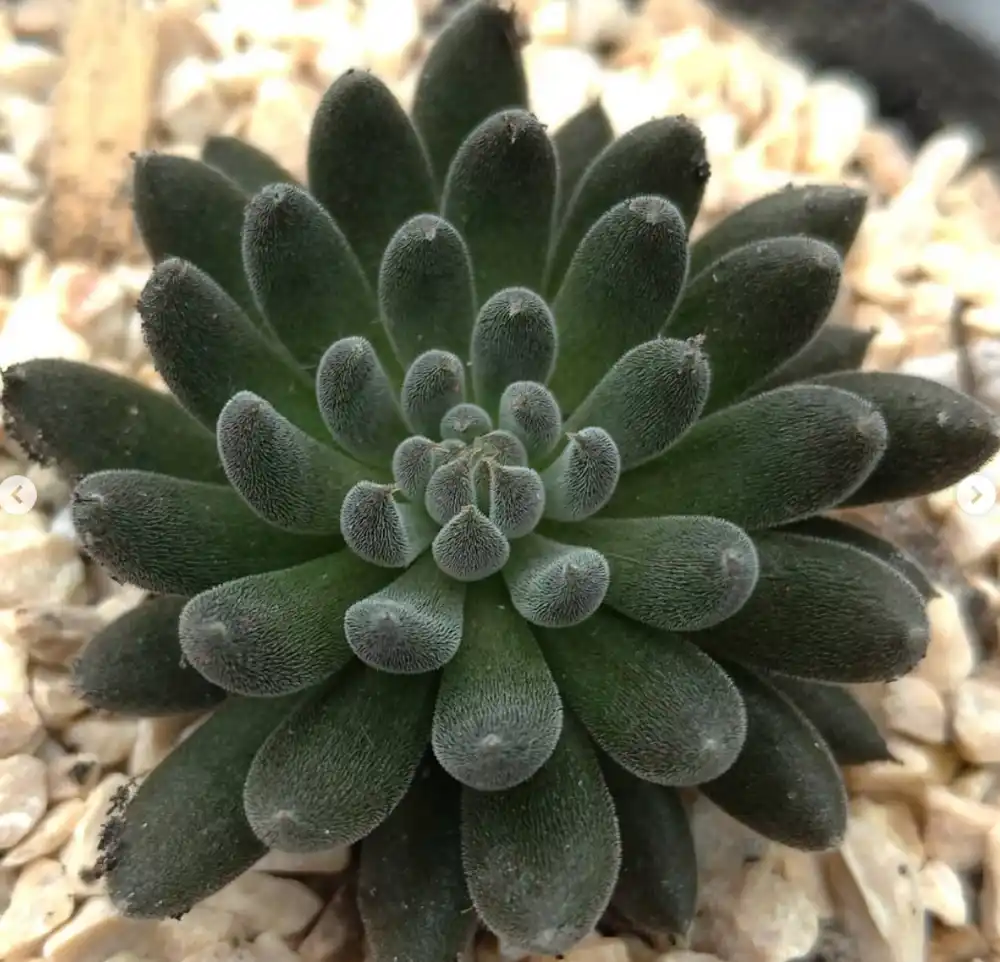
Dig in!
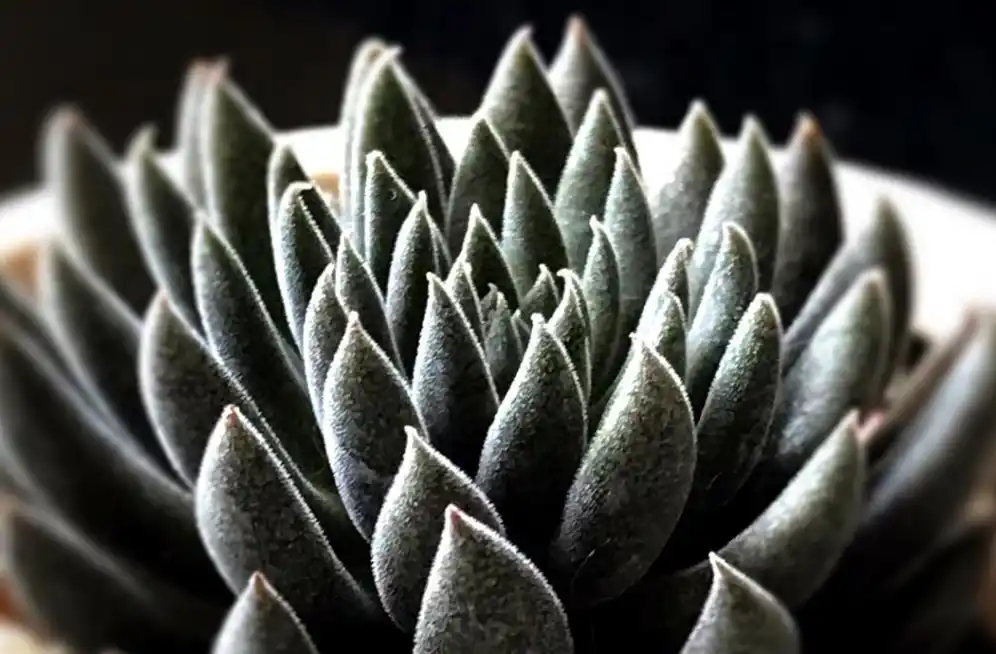
Background
Origin
Sinocrassula yunnanensis hails from the Yunnan Province in China, where it thrives in rocky, mountainous terrain. This hardy succulent is well-adapted to its challenging environment, demonstrating its resilience and adaptability.
Fun Fact: Did you know that the Yunnan Province is considered a biodiversity hotspot due to its high number of plant and animal species? It’s home to over 18,000 plant species!
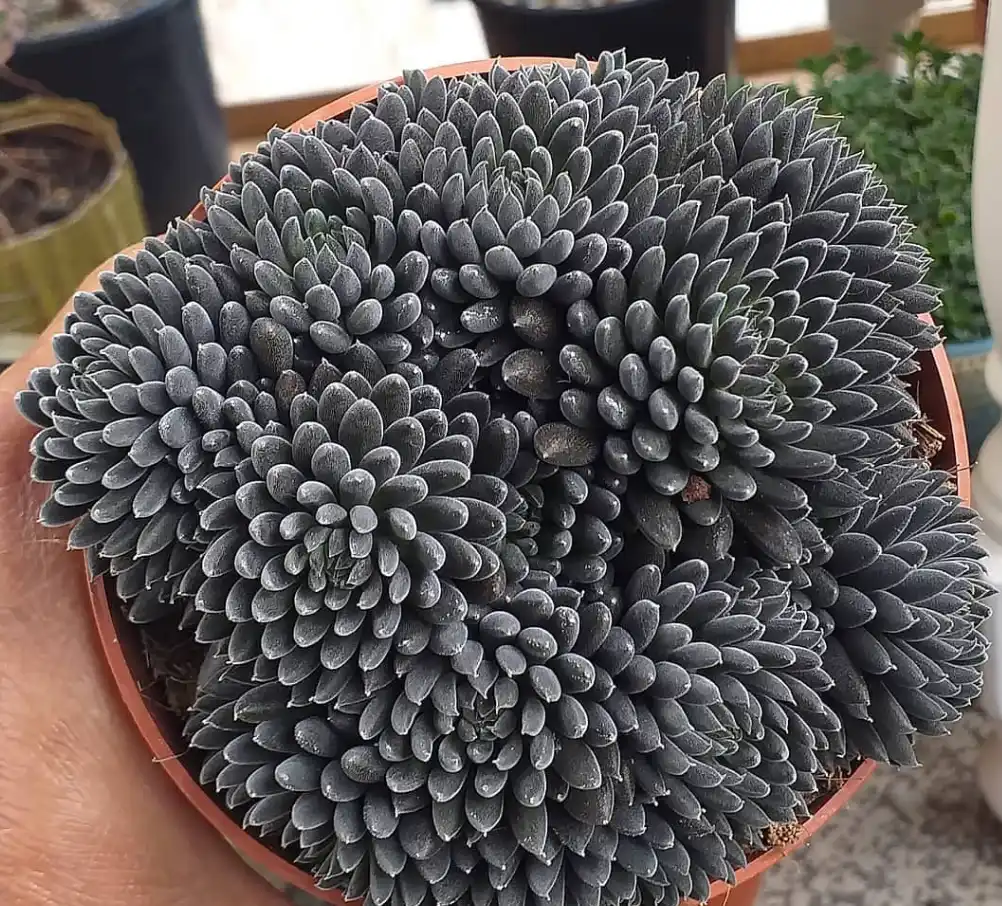
Classification
Belonging to the Crassulaceae family, Sinocrassula yunnanensis is part of the Sinocrassula genus, which contains only a few species. This succulent is considered a perennial and is classified as a monocarpic plant, meaning it flowers once and then dies.
Common Names
Sinocrassula yunnanensis is also known by several common names, including Yunnan Sedum, and Black Sedum. These names give a nod to its origin and alluring appearance.
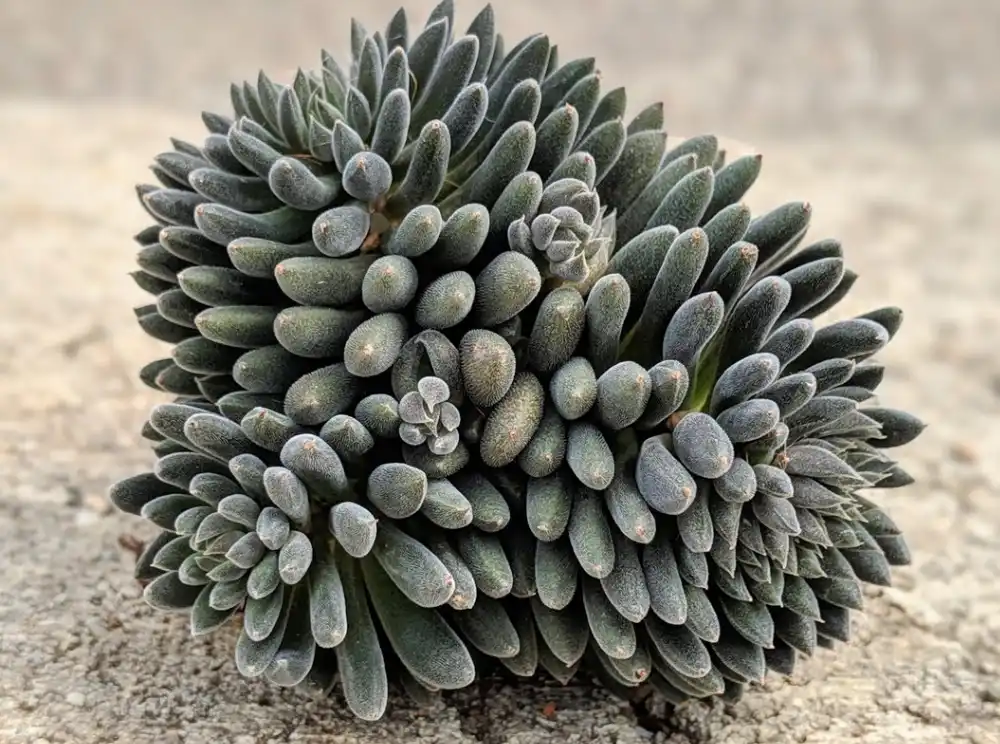
Description
Appearance
Sinocrassula yunnanensis features small, tightly-packed rosettes of fleshy, triangular leaves. These leaves are covered in tiny hairs, giving them a velvety appearance. The rosettes grow in dense clusters, creating an eye-catching, compact appearance.
Size
This succulent remains relatively small, typically reaching a height of 2 to 4 inches (5 to 10 cm) and a width of 4 to 6 inches (10 to 15 cm). Its petite size makes it an ideal choice for container gardening or as a charming addition to rock gardens.
Color and Texture
The leaves of Sinocrassula yunnanensis are generally dark green to nearly black in color, with some varieties exhibiting reddish-brown hues. The velvety texture and striking coloration make this plant a standout in any collection.
Cultivation
Soil
Like most succulents, Sinocrassula yunnanensis prefers well-draining soil to prevent root rot. A succulent or cactus mix works well, or you can create your own blend by mixing equal parts perlite or pumice, coarse sand, and potting soil.
Succulent Soil: Ultimate Guide & 4 DIY Recipes to Keep Your Succulents Happy and Healthy
Watering
Watering should be done sparingly, as overwatering can lead to root rot. Allow the soil to dry out completely between waterings, and then water deeply until water drains from the bottom of the container. During the winter months, reduce watering frequency to prevent dormancy-related issues.
When you’re rooting or transplanting your succulents and cacti, use SUPERthrive to help reduce the chance of transplant shock and grow a strong root system.
Light Requirements
This succulent thrives in bright, indirect light or filtered sun. Direct sunlight may cause the leaves to scorch, so it’s best to provide some protection from harsh afternoon sun. Indoors, a brightwindow with filtered light is ideal.
Temperature
Sinocrassula yunnanensis is relatively cold-tolerant compared to other succulents. It can withstand temperatures down to 20°F (-6°C), making it suitable for outdoor cultivation in USDA hardiness zones 9 to 11. However, it’s always best to provide some protection from frost during cold snaps.
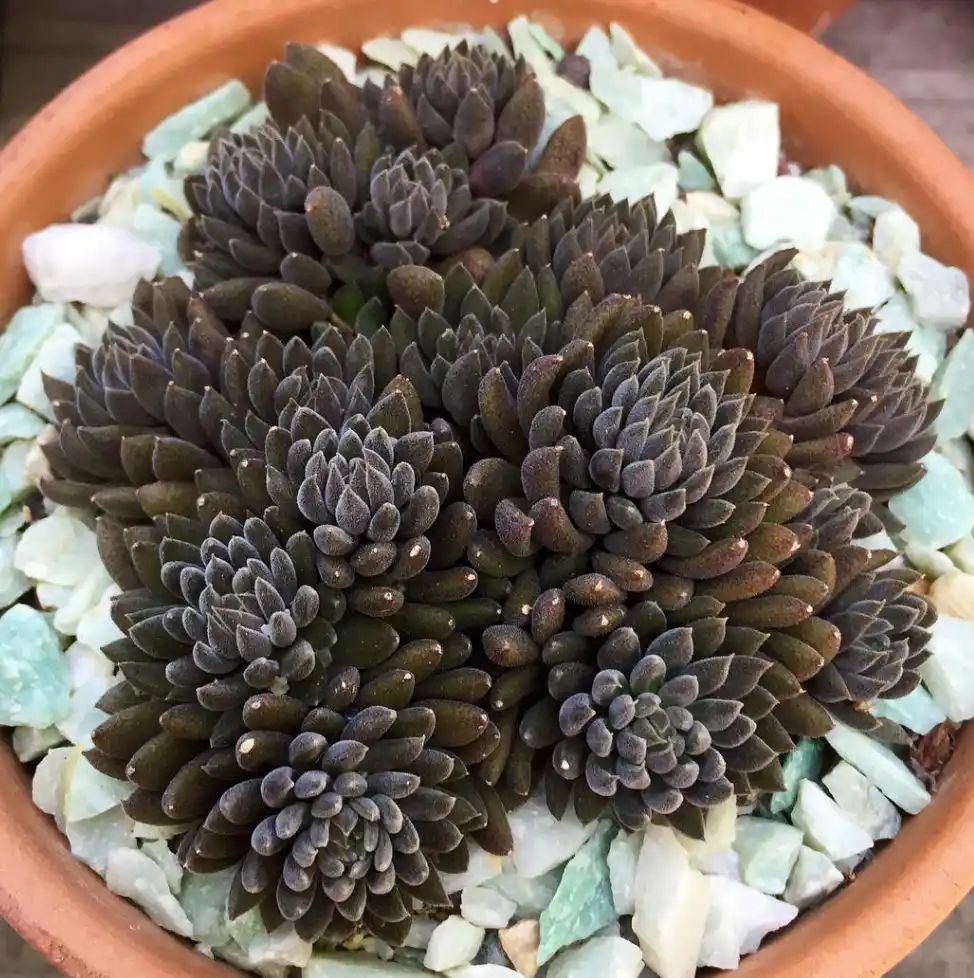
Propagation
Leaf Cuttings
One of the easiest methods for propagating Sinocrassula yunnanensis is through leaf cuttings. Gently remove a healthy leaf from the mother plant, allow the cut end to callous over for a day or two, and then place it on top of a well-draining soil mix. In a few weeks, new roots and a tiny rosette will emerge at the base of the leaf.
Offsets
Sinocrassula yunnanensis naturally produces offsets, or “pups,” at the base of the mother plant. These can be carefully separated and replanted in a well-draining soil mix to produce new plants.
Seeds
Growing Sinocrassula yunnanensis from seeds can be more challenging but is still possible. Sow the seeds in a well-draining soil mix, lightly covering them with a layer of sand. Keep the soil consistently moist but not wet, and provide a consistent temperature of around 70°F (21°C).
Propagating Succulents 4 Ways: The Best Guide Ever
Common Issues
Pests
Like other succulents, Sinocrassula yunnanensis can be prone to pests such as mealybugs, spider mites, and aphids. Keep an eye out for these critters and treat them promptly with insecticidal soap or neem oil.
As an Amazon Associate I earn from qualifying purchases at no additional cost to you.
Fix the pest problem on your succulents and cacti with these popular insecticides.
Diseases
Root rot is the most common disease affecting Sinocrassula yunnanensis. To prevent this issue, ensure the plant is potted in well-draining soil and avoid overwatering.
Environmental Issues
Leaf drop can occur if the plant is exposed to extreme temperature fluctuations or if it is overwatered. Monitor the plant’s environment closely and adjust as needed to keep it healthy and thriving.
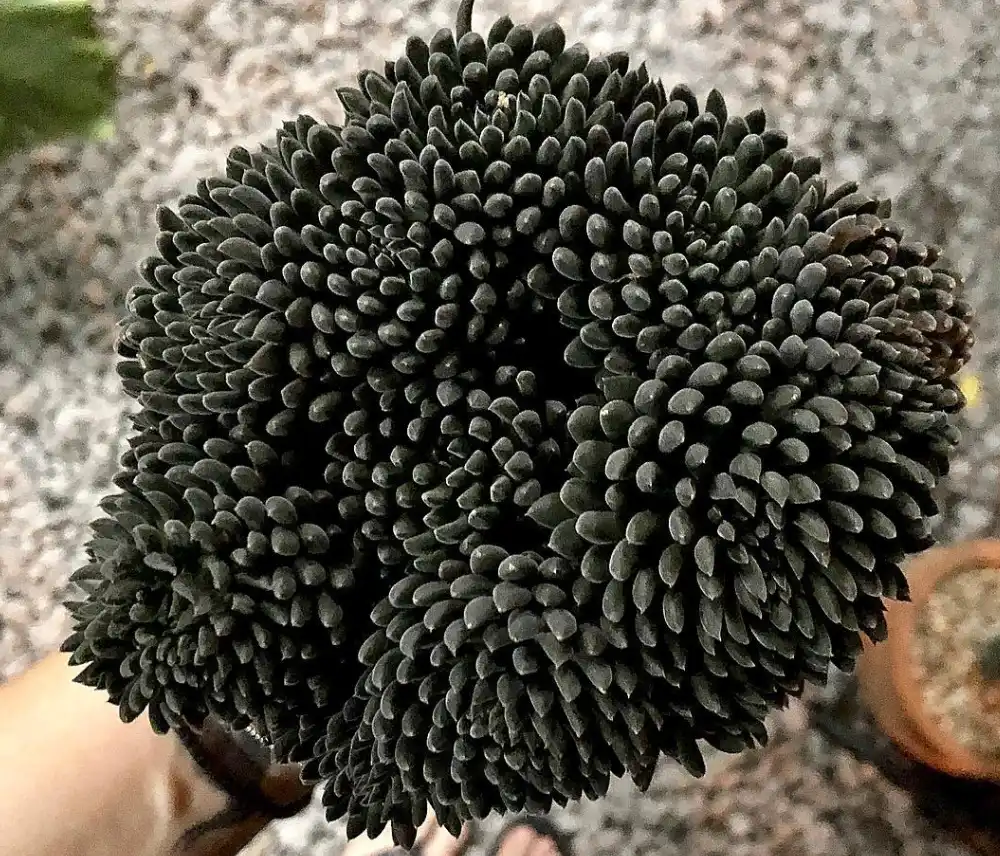
Sinocrassula yunnanensis is a fascinating and visually stunning succulent that’s sure to captivate any plant enthusiast. With proper care and attention, this unique plant will reward you with its intriguing appearance and resilient nature. So, why not consider adding this captivating succulent to your collection today?
FAQs
1. How often should I water it?
Water your Sinocrassula yunnanensis when the soil is completely dry, and then water deeply until water drains from the bottom of the container. In winter, reduce watering frequency.
2. Can it tolerate direct sunlight?
While it prefers bright, indirect light or filtered sun, direct sunlight may cause the leaves to scorch. Provide some protection from harsh afternoon sun.
3. How can I propagate Sinocrassula yunnanensis?
You can propagate Sinocrassula yunnanensis through leaf cuttings, offsets, or seeds.
4. What pests are common to Sinocrassula yunnanensis?
Mealybugs, spider mites, and aphids are common pests that may affect Sinocrassula yunnanensis. Treat them promptly with insecticidal soap or neem oil.
5. Is Sinocrassula yunnanensis safe for pets?
While not considered toxic, it’s always best to keep plants out of reach of pets to prevent accidental ingestion.




